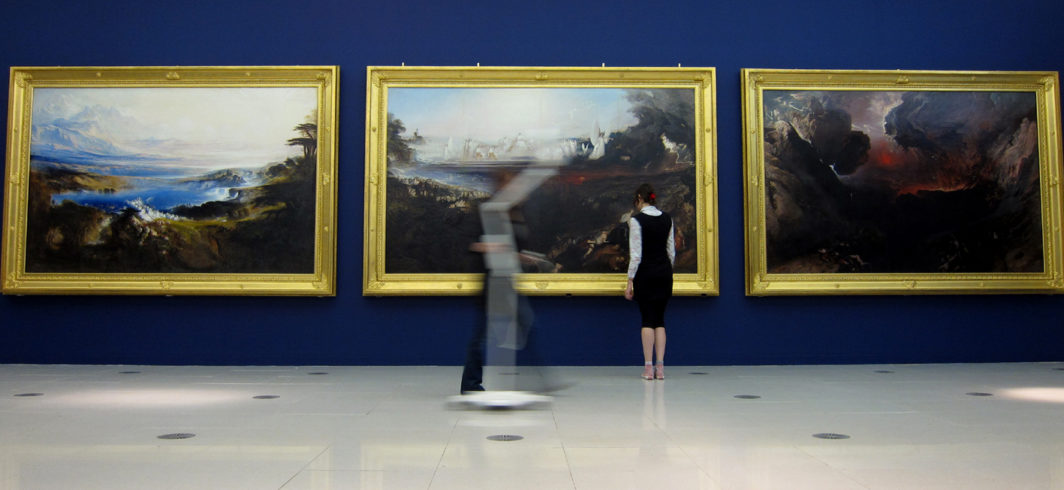John Martin was an English painter, engraver, and illustrator. Known for his melodramatic religious-themed paintings, he served as an important inspiration for W.S. Gilbert’s work.
Martin’s art was typically fantastic and imposing. He painted imposing landscapes, with minute figures and fantastic compositions. For some, he was known as the most important painter of his day – but his work wasn’t to everyone’s taste.
Inspiration for W.S. Gilbert
W.S. Gilbert seemed to find his work inspiring. One of his early Gaiety operas was the play entitled ‘Robert the Devil’. Based on Meyerbeer’s spectacular romantic opera, it used John Martin’s 1841 painting ‘Pandemonium’, as inspiration for one of its scenes. Gilbert had Grieve and Son to create the set for him.
However, it was a later John Martin painting that seemed to have captured W.S. Gilbert’s attention and creativity. Gilbert recreated the scene from John Martin’s ‘The Plains of Heaven’ as a setting for his third fairy play, ‘The Wicked World’. Five years earlier he’d suggested to a reviewer that it would make a good transformation scene in a play – and this idea obviously germinated in his mind as he finally did so.
The Plains of Heaven
‘The Plains of Heaven’ is an 1853 oil painting by Martin. Another vast landscape, it depicts rolling hills, a blue expanse of heavenly alpine lake, rushing water and majestic mountains.
Part of the great triptych, The Plains of Heaven is one of three paintings known as the Judgement Series. The Plains of Heaven is the most serene of the three. As with all three paintings, it was inspired by St John the Divine’s account of the Last Judgement and shows the good and righteous people – including poets and artists – assembling in the plains of heaven, gathered like white clouds on the hillside.
The life of John Martin
John Martin was born on 19th July 1789, in Northumberland. He was placed under the guidance of Italian artist Boniface Musso. They moved to London in 1806 and Martin married two years later. He supported himself by providing drawing and watercolour lessons – predominantly on china and glass.
He sent his first oil painting to the Royal Academy in 1810, but it wasn’t hung. He persevered and resent it to them again the following year. This time, it was hung in the Great Room, under the title ‘A Landscape Composition’. He continued to produce a succession of large landscapes, each showing the ruggedness of Northumberland, but his work gradually moved over to portraying grand biblical themes inspired by the Old Testament.
Patronage propelled Martin’s career. He finally achieved public acclaim in 1816, with his painting ‘Joshua Commanding the Sun to Stand Still Upon Gibeon’ – even if it broke many conventional rules of composition.
Martin began experimenting with mezzotint technology, leading him to produce a commission of 24 engravings for the latest edition of Paradise Lost. He also was involved in many different plans and inventions – including the Thames Embankment, railways schemes, and sewers.
During the last four years of his life, Martin produced the trilogy known as the Judgement Series. The trilogy comprised of the biblical subjects ‘The Last Judgement’, ‘The Great Day of His Wrath’ and ‘The Plains of Heaven’. They were completed in 1853. Shortly after, Martin suffered a stroke that paralysed his right side. He never recovered and died on 17th February 1854. All three ‘The Last Judgement’ paintings are now with Tate Britain.
Image Copyright: Curators installing John Martin’s large-scale triptych, including The Plains of Heaven (1851), The Last Judgement (1853) and The Great Day of His Wrath (1851-3), at the Millennium Gallery in 2011. Photo Courtesy of Museums Sheffield.


